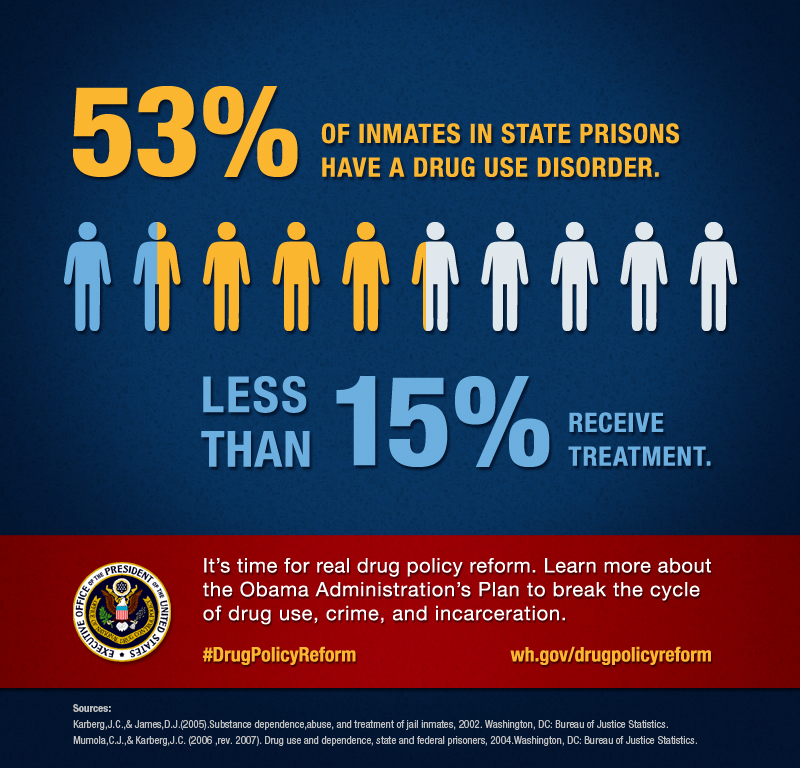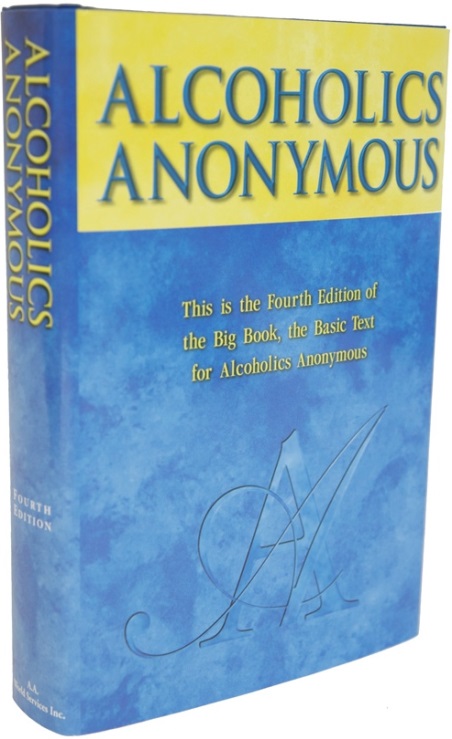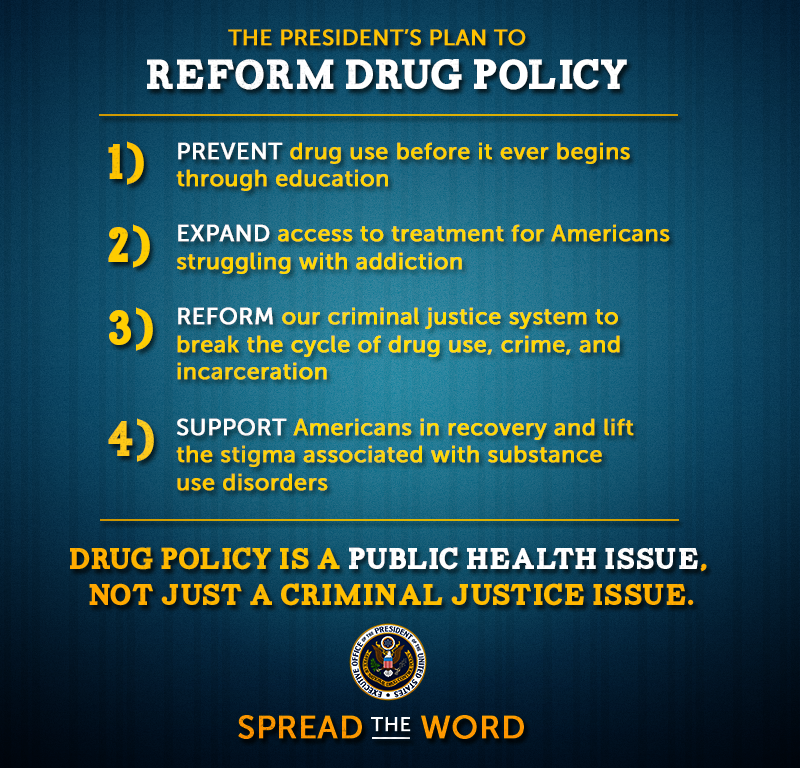ONDCP Blog
Cross Post: Hepatitis C Infection Among Young Injection Drug Users: Addressing an Emerging Trend
Posted by on June 6, 2013 at 10:30 AM ESTThis is a cross-post from the AIDS.gov blog. The original post can be found here. Dr. Ronald Valdiserri
Dr. Ronald ValdiserriIn recent years, there has been an emerging epidemic of hepatitis C virus (HCV) infection among young injection drug users (IDU) in rural and suburban settings. Early this spring, the U.S. Department of Health and Human Services convened a multidisciplinary technical consultation to discuss the existing evidence and to identify and define priorities for the development of a public health response. Already working together to implement the Action Plan for the Prevention, Care, and Treatment of Viral Hepatitis—which includes among its priorities “reducing viral hepatitis caused by drug use behaviors”—the Office of HIV/AIDS and Infectious Disease Policy, the National Institutes of Health, the Centers for Disease Control and Prevention, the Substance Abuse and Mental Health Services Administration organized the consultation which brought together representatives of federal agencies, state health department officials, researchers, care providers, staff of community-based organizations, and other experts in the field. Over two days the participants explored factors fueling this epidemic and recommended priorities around epidemiology and surveillance initiatives, prevention and linkages to care interventions, and research questions designed to curb the rising rate of HCV among young persons who inject drugs (PWID) in the United States.
New HCV Infection Trend Among Young People Who Inject Drugs
Injection drug use is known to play a major role in HCV transmission. Surveillance data shared by Massachusetts in 2010 put a spotlight on an emerging HCV infection trend among young PWID. That year, the Massachusetts Department of Public Health analyzed chronic hepatitis C infection data and observed an increase of HCV among persons aged 15–24 between 2002 and 2009. The young people being reported were from all over the state, almost all outside of metropolitan Boston, primarily White, and equally male and female. In-depth interviews with a number of these HCV-positive young people uncovered that most were IDUs who had started opioid use by first misusing oral oxycodone around 1–1.5 years before transitioning to injecting heroin.
After the Massachusetts findings were published, other jurisdictions across the country, began to report similar findings: rising rates of hepatitis C infection among young injectors, both male and female, primarily White, found in suburban and rural settings, who started misusing prescription opioids (e.g., oxycodone) before transitioning to heroin injection.
Participants in the consultation shared that HCV transmission among young IDUs is highly efficient, with young injectors frequently acquiring HCV soon after they first begin to inject opioids. This indicates that the window for HCV prevention interventions targeting this population is narrow. In addition to drug use behaviors, other risk factors influence their risk of acquiring or transmitting HCV including homelessness and a lack of understanding about their risk of infection with HCV and how to prevent it.
The size of this population is significant. An analysis of data from the National Household Survey on Drug Abuse between 1979-2002 (now the National Survey on Drug Use and Health) estimated that 590,000 young adults aged 18–29 had ever injected drugs. As the surveys do not include institutionalized or homeless individuals, it is likely that these figures are underestimates. Among these young injectors, it is estimated that as many as 45% (265,000) are infected with HCV.
There is growing concern that these increases could begin to reverse the declines in overall HCV incidence and prevalence observed by the CDC over the past decade. It is clear that federal, state local and community partners need to take action if we are to mount a sound public health response.
Strategies to Address HCV Infection Among Young PWID
 During the consultation, researchers, federal agency representatives, providers, and community leaders shared presentations on key facts about the epidemiology of HCV infection among this population, the state of current research, and examples of innovative community responses. The consultants engaged in robust, highly interactive discussions identifying successes, challenges, and gaps and proposing strategies to address the issues that emerged. A summary of the presentations and the groups’ recommendations are presented in a meeting summary report [PDF 4MB].
During the consultation, researchers, federal agency representatives, providers, and community leaders shared presentations on key facts about the epidemiology of HCV infection among this population, the state of current research, and examples of innovative community responses. The consultants engaged in robust, highly interactive discussions identifying successes, challenges, and gaps and proposing strategies to address the issues that emerged. A summary of the presentations and the groups’ recommendations are presented in a meeting summary report [PDF 4MB].The consultation participants recommended several key public health actions including:
-
Create community-led education and messaging strategies on hepatitis C risks, injection transmission risks (e.g., sharing drug preparation equipment in addition to sharing drug injection equipment), and HCV testing resources.
-
Improve and increase infrastructure for HCV surveillance and data collection.
-
Create age-appropriate (e.g., young adult) substance use and hepatitis C interventions and prevention strategies that are evidence based and effective.
-
Expand both community-based and basic science research activities to better understand how to effectively address the emerging crisis of hepatitis C infection among young IDUs.
Discussions about this issue are ongoing among the participants and other federal and non-federal partners as we collaborate on ways to stem the tide of new HCV infections among young PWID and connect those already living with HCV to care and treatment for their infection and underlying drug use. With heightened awareness of this evolving epidemic and the attention and engagement of partners from across all sectors of society– including the voices of young people– we can make a positive difference in the lives of these young men and women.
Learn more about-
Guest post: Michael Banyard’s Story, Part 4 – Final Entry
Posted by on June 3, 2013 at 2:27 PM ESTIn June 2012, National Drug Control Policy Director Gil Kerlikowske visited the Betty Ford Center, one of the Nation’s oldest and most recognized addiction treatment facilities. There he gave remarks to a crowd of leaders in the field of recovery. In the audience were two special guests—Michael Banyard and Federal District Court Judge Spencer Letts. In his remarks, Director Kerlikowske mentioned Banyard’s improbable—and inspirational—journey from crack cocaine dependence and homelessness, to prison, to a successful sentence appeal, to the chambers of a federal district court judge and completion of his GED.
Read Part 1, Part 2 and Part 3 of Michael Banyard’s story.
I went to the Los Angeles Dream Center. It was August 18, 2011, when I arrived, and at that time I was back on parole and also probation at the same time.
I committed myself to do 1 full year in the Discipleship Program, and after the first 30 days I knew I had never been anywhere like this. They not only gave discipline and spiritual structure, but also taught me how to build your character and learn the power of integrity. How to do what is right even when no one is looking!
I felt so strong about my opportunity of permanent change, that I told my roommates, "Before I graduate I will be off parole and probation." Today, I can say that dream came true. I discharged parole April 5th, 2012. My parole officer called and said I had done great and they were really proud of my accomplishments.
The very next month I went to court for a progress report as to my formal probation and the court was so pleased that at the end of the hearing I was given the opportunity to speak. I thanked the court for giving me the chance to change my life, and asked if I could be removed from formal probation. The court said I had a long past, but my accomplishments at the Dream Center had reach beyond what they expected, and granted my request. Since this was before the year was completed, I went back to court later on to show the court that I did not change from my positive path just because formal probation was removed. So, when the term of a year was reached I returned to court and I invited Judge Letts, so that I could thank both justices for not giving up on me, for if they had I would have probably been dead or back in prison for life.
After that court date, Judge Letts and I sat outside the Los Angeles Superior Court and shared a moment of bliss.

Judge Letts and Michael Banyard outside a State Court House after Michael was discharged from formal probation.
Kurt Streeter of the Los Angeles Times wrote a follow up story of how my life had change since I arrived at the Dream Center. Shortly following that, my mind was even blown more when I was invited to meet the Director of National Drug Control Policy.

Michael Banyard and Judge Letts were honored to meet the Director of Drug Policy.
Today, I am a very happy graduate of the Los Angeles Dream Center Discipleship Program.

Michael Banyard at Angelus Temple in Los Angeles, graduating from a 1 year Discipleship Program at the Dream Center.
I can say that never in my life have I ever volunteered to be inside a program or institutional setting, yet even though I graduated the Discipleship Program, I stayed on working as a Resident Advisory. I am able to serve the needs of the men who are within their first four months of the program, encouraging them as one who personally understands that change is possible.
Last year, I completed the Dream Center’s G.E.D. program, and am proud to report that I passed the G.E.D. exam in December 2012.
With the Dream Center, I share in the mission to "find needs and fill it, find hurts and heal it."

Michael Banyard remains at the Dream Center as a volunteer to encourage new intakes of the program as a Resident Advisory.
Michael Banyard is the founder of Each1Reach1Teach1, where he mentors the children of incarcerated parents.
He thanks the Office of the Director of Drug Policy for sharing his story. Michael passionately thanks Judge Letts for never giving up on him, and thanks Pastor Matthews of the Dream Center because his vision has changed many lives. But most of all, Michael thanks God for putting it all together.
Learn more aboutADAM II Report and Alcohol
Posted by on May 28, 2013 at 4:57 PM ESTLast week, we released the 2012 Arrestee Drug Abuse Monitoring Annual Report (ADAM II), a long running study that reveals the percentage of arrestees in certain U.S. cities/counties testing positive for at least one illegal drug at the time of arrest. Because of the significant impact on public health and safety (in 2007 alone, illegal drugs were responsible for over $193 billion in lost productivity, health, and criminal justice costs) this survey has long served as a vital asset for officials at both the local and national levels. Typically, however, the annual ADAM report does not include findings about alcohol use. Why? Here are three reasons:
1. Simply put, the nexus between alcohol use and crime is already well documented. You’d be hard pressed to find anyone – particularly in the criminal justice research community - who would dispute the long established link between the use of a widely available, legal drug like alcohol and crime. Moreover, there are already many other surveys that compare rates of legal drug use to illegal drug use - most notably the National Survey on Drug Use and Health (NSDUH), the Nation’s premiere general population survey. (Here’s a chart showing rates of legal drug use vs. illegal drug use using NSDUH data).
What’s harder to investigate, however, are emerging trends in illegal drug use – which fluctuate and shift more widely compared to alcohol - at the local level, and among a highly transient, often homeless criminal justice population. How does meth use among arrestees in Sacramento compare to Chicago? Is cocaine use falling or rising among arrestees in each of the five sites measured by ADAM II? How does opiate use among arrestees in Atlanta compare to New York? These are the types of questions ADAM II is designed to investigate.
2. The ADAM II study doesn’t test arrestees for alcohol in the first place. One of the primary characteristics that make the ADAM II survey unique is that it collects bioassay data (urinalysis) from arrestees within 48 hours of arrest (as opposed to larger surveys such as NSDUH that rely solely on a questionnaire). Since ADAM II only tests for certain illegal drugs (marijuana, cocaine, opiates, amphetamines/methamphetamine, Darvon, PCP, benzodiazepines, methadone, and barbiturates), there are no data on positive alcohol results to report in the study.
As part of the data collection process, some questions are asked about alcohol use, but since the focus of the annual report is on the drug test results, the findings from the alcohol questions are not included in the report. However, in keeping with the scientific principles of transparency and accessibility and Administration policy, ONDCP makes the complete ADAM II raw data file available to researchers so they can conduct their own analyses. These raw data are available for previous years of ADAM data collection through the University of Michigan’s Inter-University Consortium for Political and Social Research (ICPSR), a data warehouse used by many Federal agencies to make their data available to the research community. (Users must first register with the ICPSR and sign a user’s agreement, and more recent years data will be available there soon).
3. The primary focus of ONDCP is to reduce illegal drug use and its consequences. A component of the Executive Office of the President, ONDCP was created by the Anti-Drug Abuse Act of 1988 (you can read our Congressional authorization here). Accordingly, ONDCP’s primary mission has focused on efforts to reduce illicit drug use, manufacturing and trafficking, drug-related crime and violence, and drug-related health consequences.
As part of our commitment to science-based drug policy, we welcome conversation about our research. The ADAM II survey has been a valuable tool for our office, and we encourage anyone with an interest in its findings to take a look.
Learn more aboutNew Arrestee Data Underscore Need for 21st Century Approach to Drug Policy Reform
Posted by on May 23, 2013 at 1:00 PM ESTToday, I spoke at the Urban Institute to call for the expansion of criminal justice reforms aimed at addressing the underlying causes of criminal behavior in light of new data confirming the nexus between drug use and crime. The 2012 Arrestee Drug Abuse Monitoring Annual Report (ADAM II) shows that in five cities/counties, more than half of adult males arrested for crimes ranging from misdemeanors to felonies tested positive for at least one illegal drug. According to ADAM II, positive test results among arrestees ranged from 62 percent in Atlanta to 86 percent in Chicago.

Director Kerlikowske, Marc Mauer, Chief Thomas Manger and Nancy La Vigne at Urban Institute.
In 2004, according to the Bureau of Justice Statistics, 53 percent each of jail and state inmates and 46 percent of Federal inmates suffered from drug use abuse or dependence – and yet only 7 percent of jail inmates, 15 percent of state inmates, and 17 percent of Federal inmates received treatment.

These data show that reform is needed. A month ago, the Obama Administration released the 2013 National Drug Control Strategy (Strategy), the president’s plan for 21st century drug policy reform based on scientific research about the nature of addiction. This plan reflects our understanding of addiction as chronic brain disease—one that can be prevented, treated, and from which people can recover.
The Strategy also supports a “smart on crime” approach to drug enforcement, protecting communities from domestic and international drug-related crime while diverting non-violent drug offenders into treatment instead of prison. As part of this approach, our plan highlights promising criminal justice reform, like drug courts and smart probation programs that reduce incarceration rates, along with community-based policing programs that break the cycle of drug use, crime, and incarceration while focusing limited enforcement resources on more serious offenses.
Far too often, addiction is at the root of what drives crime in our communities. To stop the revolving door of the criminal justice system in America, we must address not only serious criminal activities, but equally important, underlying substance use disorders. The ADAM II report confirms an urgent need to support policy reform outlined in the Obama Administration’s new drug policy strategy, which emphasizes prevention, treatment, and “smart on crime” policies that break the vicious cycle of drug use, crime, and incarceration in America.
To read the full 2012 Arrestee Drug Abuse Monitoring Annual Report (ADAM II) report, click here.
Learn more aboutAlcoholics Anonymous: Original Twelve Step Recovery Program
Posted by on May 10, 2013 at 10:40 AM EST As part of national efforts to raise public awareness about recovery and maintain dialogue with diverse recovery community stakeholders, ONDCP Director Gil Kerlikowske visited the General Service Office of Alcoholics Anonymous (A.A.) in New York City. The Director toured the organization’s archives and met with the Board of Directors of A.A. World Services, Inc. (A.A.W.S.).
As part of national efforts to raise public awareness about recovery and maintain dialogue with diverse recovery community stakeholders, ONDCP Director Gil Kerlikowske visited the General Service Office of Alcoholics Anonymous (A.A.) in New York City. The Director toured the organization’s archives and met with the Board of Directors of A.A. World Services, Inc. (A.A.W.S.).Founded in 1935, A.A. introduced the now widely known concept of the Twelve Steps as a path to recovery. The Twelve Steps have subsequently been adopted to support people recovering from a host of other addictions (e.g., Narcotics Anonymous), the family members of those with or in recovery from addiction (e.g., Al-Anon, Alateen, Nar-Anon), and individuals with dietary or weight issues (e.g., Overeaters Anonymous). A.A. estimates that as of January 2011, there were nearly 58,000 autonomous A.A. groups and 1.3 million members in the United States alone. Worldwide, it is estimated there are nearly 108,000 groups and 2.1 million members.[i]
Alcoholics Anonymous has a singleness of purpose. According to A.A.’s Fifth Tradition, “each group has but one primary purpose—to carry its message to the alcoholic who still suffers.” This does not mean that people who take part in A.A. meetings don’t have other problems, including addiction to drugs. Rather, it reflects the understanding that it is through a singleness of purpose that A.A. can best accomplish the mission for which it was established. People with co-occurring alcohol and drug problems are welcome to take part in A.A. meetings, provided the focus of their participation is addressing their alcohol problem. Research indicates, in fact, that approximately one in eight alcoholics are also addicted to drugs, and that more than half of those addicted to drugs are also addicted to alcohol.[ii]
Prior to meeting with the A.A.W.S. Board, Director Kerlikowske toured the A.A. Archives, which feature letters from U.S. presidents recognizing Alcoholics Anonymous for helping countless Americans regain health and happiness through its program of recovery from alcoholism. The archive also features the Lasker Award, presented to A.A. in 1951 by the American Public Health Association “in recognition of its unique and highly-successful approach to … alcoholism;” and a copy of the Hughes Act, the 1970 Congressional Bill that recognized alcoholism as “an illness or disease that requires treatment.” The bill also provided for the establishment of the National Institute on Alcohol Abuse and Alcoholism and was followed by legislation leading to the creation of the National Institute on Drug Abuse.
During the Board meeting, Director Kerlikowske described ONDCP policies, priorities, and activities in the recovery domain. After concluding his remarks, a member of the A.A. World Services staff explained the manner in which A.A. cooperates with professionals in order to help serve the still-suffering alcoholic. A discussion of potential avenues for cooperation between ONDCP and A.A. ensued. Following the discussion, the A.A.W.S. Board presented the Director with a signed copy of A.A.’s basic text, Alcoholics Anonymous, commonly known as “The Big Book.” The Library of Congress recently included the Big Book in an exhibition entitled “88 Books that Shaped America.”
As an organization, A.A. holds no affiliation with any outside group and does not endorse or oppose any cause. However, it does interact with professionals in a number of ways. For example, it accepts referrals. According to the most recent A.A. Membership Survey, 40 percent of members were referred to meetings by a healthcare professional. The group also encourages members to be of service to other alcoholics. Members organize meetings and share their experiences and insight with those under professional care seeking to recover from alcoholism. Members also conduct informational meetings or presentations for professionals interested in learning what A.A. is and what it is not.
Those wishing to learn more about A.A. can contact a local central office or intergroup for open A.A. meeting information; observe open A.A. meetings and talk to people in A.A. about their recovery and A.A. experiences; read A.A. literature, including The Big Book of Alcoholics Anonymous, Twelve Steps and Twelve Traditions, and numerous pamphlets designed specifically for professionals; or subscribe to the free About A.A. newsletter or the monthly magazine A.A. Grapevine or its Spanish-language edition,La Viña.
[i] Alcoholics Anonymous (2012). A.A. Fact File. Alcoholics Anonymous General Service Office. New York, New York.. Original Copyright 1956.
[ii] Falk, D., Ye, H., Hiller-Sturmhöfel, H. (2008). An Epidemiologic Analysis of Co-Occurring Alcohol and Drug Use and Disorders: Findings From the National Epidemiologic Survey of Alcohol and Related Conditions (NESARC). Alcohol Research and Health. P. 106. (http://pubs.niaaa.nih.gov/publications/arh312/100-110.pdf)
Learn more aboutDrug Policy Reform Through Alternative Courts
Posted by on May 6, 2013 at 1:00 PM EST
Matthew Perry and Director Kerlikowske chat after meeting to discuss drug policy reform.
The White House has just released a drug policy reform plan that outlines science-driven solutions to the drug problem in America. About eight years ago, I began speaking publicly about one of the solutions the Administration supports—a program called drug courts.
Over time, I learned that drug courts are a wonderful solution to one of the biggest problems facing our criminal justice system: people suffering from substance use disorders who are caught in the cycle of arrest and incarceration. Many of these individuals require treatment, not a jail cell, and drug courts provide them a means of getting the treatment they need.
I have testified before Congress several times about the value of drug courts, and I have served as a spokesperson for the country’s leading champion for drug courts, the National Association of Drug Court Professionals. Today, I had the chance to meet with the President’s drug policy advisor, Gil Kerlikowske, and several officials from the Administration to discuss the role of drug courts in the President’s plan to reform national drug policy.

ONDCP Director Gil Kerlikowske, Matthew Perry and Administration officials meet to discuss drug courts and the President's plan for drug policy reform.
The Nation’s more than 2,700 drug courts treat the disease of addiction instead of incarcerating those who are struggling with it. Research has shown that drug courts are one of the most effective ways to keep people out of jails and prison, reduce crime, and save money. In fact, 75 percent of drug court graduates remain arrest-free at least two years after leaving the program, and studies examining long-term outcomes of individual drug courts have found that reductions in crime last at least 3 years and can endure for over 14 years.
Nationwide, for every $1 invested in drug court, taxpayers save as much as $3.36 in avoided criminal justice costs alone. Studies have shown that when other cost offsets are considered, such as savings from reduced victimization and healthcare costs, benefits can range up to $27 for every $1 invested. States and communities are investing in drug courts: For every dollar the Federal Government spends on drug courts, $9 was leveraged in state funding.
I know firsthand how difficult and painful addiction can be – I’ve lived through it. Now I’m proud to be in long-term recovery from addiction, and I’m proud to be an advocate for a program that’s finally breaking the vicious cycle of addiction, arrest, and incarceration.
In my meeting with Director Kerlikowske today, I learned about the President’s plan to reform drug policy, which emphasizes treatment and prevention over incarceration. The President’s plan is based on neuroscience, not political science—a philosophy perfectly embodied by the drug court program.
Matthew Perry is an actor and Celebrity Ambassador for National Association of Drug Court Professionals.
Learn more aboutDrug Policy Reform In Action: A 21st Century Approach
Posted by on April 24, 2013 at 9:16 AM ESTThe President has outlined his vision of an America built to last—where an educated, skilled workforce has the knowledge, energy and expertise to compete in the global marketplace. Yet--for far too many Americans--that vision is limited by drug use, which not only diminishes the potential of the individual, but jeopardizes families, communities and neighborhoods.
The economic costs of drug use are enormous: In 2007 alone, illicit drug use cost taxpayers more than $193 billion in lost productivity, healthcare, and criminal justice costs. But the human costs are worse. Nationwide, drug-induced overdose deaths now surpass homicides and car crashes as the leading cause of injury death in America.
We are not powerless to address these challenges. And as recent data has shown, we are not unable to reverse these trends. Prescription drug abuse is beginning to decline. Cocaine use and related overdoses are dropping. And recent data show the nation’s prison and jail population dropping for the third straight year.
Today we are releasing a science-driven plan for drug policy reform in America to build upon this progress. This 21st century drug policy outlines a series of evidence-based reforms that treat our Nation’s drug problem as a public health issue, not just a criminal justice issue. This policy underscores what we all know to be true: we cannot arrest or incarcerate our way out of the drug problem.

America’s 21st century approach to drug policy is built on decades of research demonstrating that addiction is a disease of the brain—one that can be prevented, treated, and from which people can recover. The 2013 Strategy reflects this understanding by emphasizing prevention and treatment programs over incarceration, by replacing “tough on crime” with “smart on crime” and by making access to treatment a reality for millions of Americans. In fact, the President’s 2014 budget requests $1.5 billion more for treatment and prevention programs compared to 2012 – the largest requested increase in at least two decades.
Drug policy is not about leaving Americans to fend for themselves. It’s about helping women with substance use disorders get access to prenatal care so their children can get a healthy start in life. It’s about showing teenagers a healthy path to adulthood so they can succeed as productive members of society with the skills they need to compete in the 21st century. It’s about giving a person who struggles with addiction an opportunity to go to treatment and receive support in recovery. It’s about the historic expansion of mental health and addiction treatment to 62 million Americans who need help provided by the Affordable Care Act.
This is what drug policy reform looks like, and that’s what is in the Strategy we are releasing today.
Click here to learn more about the Administration’s plan for drug policy reform.
Learn more aboutProtecting Our Environment and Our Health: Earth Day + National Take-Back Day
Posted by on April 22, 2013 at 9:46 AM ESTIs your medicine cabinet filled with old bottles of half-used prescriptions? They might seem harmless, but that medicine can spell disaster if misused, and disposing of prescription drugs the wrong way can harm our Nation’s water supply and our environment. That’s why today on Earth Day, we want to encourage you to participate in Take Back Day on April 27th to get rid of old medications and keep your family, and the planet, safe.
Clean out your medicine cabinet
A medicine cabinet full of unneeded or expired medicine poses a risk to your loved ones, especially young people. In 2010, prescription drugs were involved in over 22,000 deaths. Of those, over 16,000 involved opioid painkillers like Vicodin® and OxyContin®.[1]
In the United States, more people die from prescription drug overdoses than from heroin or cocaine overdoses —combined.[2]
According to a recent Monitoring the Future study – the Nation's largest survey of drug use among young people – prescription drugs are the third-most abused category of drugs after marijuana. In addition, the latest National Survey on Drug Use and Health shows that over 70 percent of people who abused prescription pain relievers in the past year got them from friends or relatives the last time they used them.[3] Over 50 percent of teens in a 2008 survey said it was easy to get prescription medications from their parent’s medicine cabinet.[4] Getting rid of those old medicines is an easy step you can take to remove a temptation—and maybe save a life.
Be careful about the medicines you flush
You might think flushing all your old pills down the toilet is the best way to dispose of them, but that’s not necessarily true. Medicines that go down the drain end up in our water supply, where they can damage the environment and harm animals.[5] We don’t know if these drugs in the water supply might also harm people, but experts believe antibiotics in the water might make it harder to treat certain pathogens in the future.[6] To make sure, visit the FDA’s page on safe drug disposal guidelines to find out which medicines they recommend flushing.
President Obama and the White House Council on Environmental Quality are committed to clean water, and want to reduce contaminants in drinking water, including contamination from improperly disposed medications. So we’re encouraging everyone to participate in the Sixth National Drug Take-Back Day on April 27. On Take Back Day, local law enforcement and community groups team up with the Drug Enforcement Administration to collect unused medications so they can be disposed of safely. Visit the Take Back Day website to find a collection site near you.
Safe medication disposal tips
Can’t make it to Take Back Day? Here is how to dispose of prescription drugs safely:
- If there are no specific disposal instructions on the medication, take it out of its original container and mix it with an undesirable substance like coffee grounds or cat litter to discourage people and animals.
- Place the mixture in a sealable bag and put it in the trash.
- To protect your privacy, before throwing out a medicine container, scratch out all identifying information on the prescription label to make it unreadable.
Learn more aboutDirector Kerlikowske Speaks at National Press Club
Posted by on April 17, 2013 at 1:09 PM ESTThis afternoon, Director Kerlikowske delivered remarks at the National Press Club about drug policy reform and the Administration’s 21st century approach to drug policy. He was joined by three leaders who exemplify the drug policy reform the Obama Administration is undertaking—Dr. Kelly Clark, American Society of Addiction Medicine (ASAM) Board of Directors; General Arthur Dean, Chairman and CEO of the Community Anti-Drug Coalitions of America (CADCA); and Devin Fox, Executive Director of Young People in Recovery.
In his remarks, Director Kerlikowske spoke about the steps the Administration has taken to advance drug policy reform and the work that lies ahead—particularly in the historic expansion of treatment programs requested in the President’s 2014 budget request and required by the implementation of the Affordable Care Act.
ASAM, CADCA and Young People in Recovery each represent a critical piece of the Administration’s approach to drug policy reform. As an organization dedicated to improving the care and treatment of people with addictive disorders, ASAM trains and educates physicians to enable them to treat substance use disorders like other chronic diseases. With its tireless work implementing evidenced-based prevention programs to communities across the country—and the world—CADCA has been a steadfast partner in preventing substance use disorders before they begin. As an advocate for recovery, Devin Fox is working to lift the stigma associated with addiction by speaking out and strengthening networks of support for other young people sustaining long-term recovery from drug or alcohol dependence.
Dr. Clark, General Dean and Devin Fox represent a broader shift in American drug policy—one that emphasizes prevention, treatment and recovery over incarceration; that pursues criminal justice reform, and is grounded in research and science. It’s part of the President’s broader plan to build an America to last—one where our workers are skilled to compete in a global marketplace, where those who need mental health and substance use treatment receive it; one where our children grow up healthy and safe.
Learn more aboutFDA Takes Action on Prescription Drug Abuse
Posted by on April 17, 2013 at 10:00 AM ESTYesterday, the Food and Drug Administration (FDA) took an important step in addressing America’s prescription drug abuse epidemic.
The FDA announced that it approved updated labeling for reformulated Oxycontin that describe the drug’s abuse-deterrent properties, the first time such a claim has been approved by the agency. FDA also said it will not accept or approve generics of the original OxyContin formulation, which lacks these properties.”
For over a century, the FDA has applied the principles of science, evidence, and common sense to protect public health and safety in America. Yesterday’s action demonstrates yet again that when it comes to our Nation’s prescription drug abuse epidemic, there are significant and important steps we can take to save lives and protect public health.
This announcement builds upon already unprecedented actions by the Administration to drive down the number of Americans affected by prescription drug abuse. Director Kerlikowske and ONDCP commend the FDA for its work to keep non abuse-deterrent formulations of this drug from reaching the marketplace while continuing to ensure access to powerful opioid analgesic drugs that – when properly used and prescribed –provide relief to those suffering from acute and serious illnesses.
The Centers for Disease Control and Prevention has classified prescription drug overdoses as an epidemic. National data show that by 2010, drug overdose deaths were the second leading cause of injury death in America. Additionally, the overall drug overdose death rate in the United States roughly tripled between 1991 and 2011, and in 2007 about 100 people per day died from drug overdoses in the U.S.
To address the threat of prescription drug abuse and diversion while also protecting legitimate access to these drugs for those suffering from pain, the Administration released Epidemic: Responding to America's Prescription Drug Abuse Crisis in 2011. This action plan provides a national framework for reducing prescription drug diversion and abuse by supporting education for patients and healthcare providers, recommending more convenient and environmentally responsible disposal methods to remove unused medications from the home, supporting the expansion of state-based prescription drug monitoring programs, and reducing the prevalence of pill mills and doctor shopping through enforcement efforts.
Learn more about
- &lsaquo previous
- …
- 6
- 7
- 8
- 9
- 10
- 11
- 12
- 13
- 14
- …
- next &rsaquo
 Dr. Ronald Valdiserri
Dr. Ronald Valdiserri During the consultation, researchers, federal agency representatives, providers, and community leaders shared presentations on key facts about the epidemiology of HCV infection among this population, the state of current research, and examples of innovative community responses. The consultants engaged in robust, highly interactive discussions identifying successes, challenges, and gaps and proposing strategies to address the issues that emerged. A summary of the presentations and the groups’ recommendations are presented in a
During the consultation, researchers, federal agency representatives, providers, and community leaders shared presentations on key facts about the epidemiology of HCV infection among this population, the state of current research, and examples of innovative community responses. The consultants engaged in robust, highly interactive discussions identifying successes, challenges, and gaps and proposing strategies to address the issues that emerged. A summary of the presentations and the groups’ recommendations are presented in a